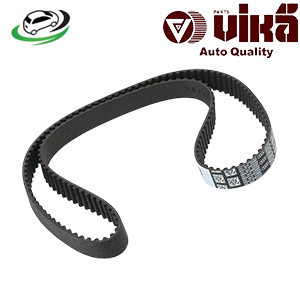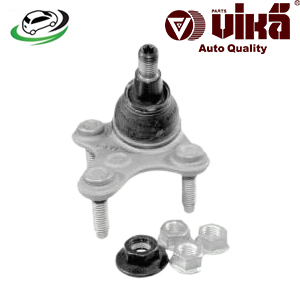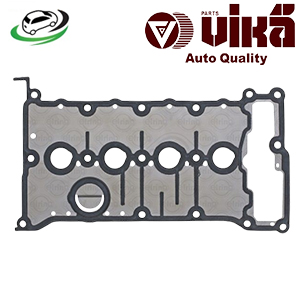-13%
Get Cylinder Head Rocker Cover Gasket AUDI A4 B6/A4 B6 Avant/A4 B6 Convertible/A4 B7/A4 B7 Avant / VW Passat B5.5 06B103483H
The cylinder head rocker cover gasket, often referred to simply as the rocker cover gasket, is a crucial component in an internal combustion engine. It serves as a seal between the rocker cover and the cylinder head, preventing oil leaks and ensuring proper engine operation. Understanding its design, function, types, benefits, maintenance, and replacement is essential for maintaining engine health and performance.
Design and Function
Design:
The rocker cover gasket is designed to fit between the cylinder head and the rocker cover (also known as the valve cover). Its design typically includes:
- Gasket Material: The gasket is commonly made from materials such as rubber, cork, or a composite material. These materials are selected for their ability to form a tight seal and withstand the engine’s operating conditions.
- Seal Configuration: The gasket features a specific shape and thickness designed to match the contours of the cylinder head and rocker cover. It often has a series of grooves or ridges to enhance the seal.
- Bolt Holes: The gasket has cutouts for the bolts or fasteners that secure the rocker cover to the cylinder head. These ensure that the gasket remains in place and maintains a uniform seal.
- Ventilation Holes: Some gaskets include ventilation holes to allow for proper air circulation and prevent pressure buildup.
Function:
The primary functions of the rocker cover gasket are:
- Sealing: Prevents engine oil from leaking out of the engine through the junction between the rocker cover and the cylinder head. This seal is crucial for maintaining proper oil levels and preventing contamination of other engine components.
- Preventing Contamination: Keeps dirt, dust, and other contaminants out of the engine, which helps maintain engine cleanliness and performance.
- Maintaining Engine Pressure: Helps to maintain proper engine pressure by sealing the rocker cover, which is important for efficient engine operation and lubrication.
- Protecting Components: Protects the engine’s rocker arms and other internal components from exposure to contaminants and oil leaks.
Types of Rocker Cover Gaskets
1. Rubber Gaskets:
- Description: Made from high-quality rubber, often with a reinforced design to improve durability and flexibility.
- Advantages: Provides a reliable seal, is resistant to high temperatures and oil degradation, and is relatively easy to install.
2. Cork Gaskets:
- Description: Made from cork material, which is often combined with a binder to enhance its durability and sealing properties.
- Advantages: Historically used due to its compressibility and ability to conform to uneven surfaces. Cork gaskets are generally less expensive but may degrade faster than other materials.
3. Composite Gaskets:
- Description: Made from a combination of materials such as rubber, fiber, and metal. These gaskets are designed to offer a balance of flexibility and durability.
- Advantages: Provides a robust seal and is resistant to high temperatures, oil, and other engine conditions. Often used in modern engines for improved performance.
4. Metal Gaskets:
- Description: Made from metal with a soft sealing material or coating. These gaskets are designed for high-performance applications.
- Advantages: Offers superior durability and resistance to high pressures and temperatures. Typically used in high-performance or racing engines.
Benefits
1. Prevents Oil Leaks:
- Effective Sealing: Ensures that oil remains within the engine, preventing leaks that could lead to low oil levels or engine damage.
- Prevents Mess and Damage: Keeps the engine area clean and free from oil spills, which can damage other engine components.
2. Maintains Engine Efficiency:
- Proper Lubrication: Ensures that oil reaches all necessary engine components, providing proper lubrication and reducing friction.
- Consistent Performance: Helps maintain consistent engine performance by ensuring that the oil system operates correctly.
3. Protects Engine Components:
- Prevents Contamination: Keeps contaminants out of the engine, which can cause wear or damage to internal components.
- Reduces Wear: Helps reduce wear on the rocker arms and other engine parts by preventing oil leaks and contamination.
4. Enhances Engine Longevity:
- Prolongs Life: A properly functioning rocker cover gasket helps to extend the life of the engine by preventing leaks and maintaining proper lubrication.
- Reduces Maintenance: Reduces the need for frequent maintenance or repairs due to oil leaks or contamination.
Maintenance and Troubleshooting
1. Regular Inspection:
- Check for Leaks: Periodically inspect the area around the rocker cover for signs of oil leaks. Leaks can indicate that the gasket is worn or damaged.
- Inspect the Gasket: Examine the gasket for signs of wear, such as cracks, tears, or deformation. A damaged gasket may need to be replaced.
2. Cleaning:
- Remove Oil Residue: Clean the area around the rocker cover and cylinder head to remove any oil residue or debris that may affect the seal.
- Inspect Surface: Ensure that the mating surfaces of the rocker cover and cylinder head are clean and free from old gasket material or debris.
3. Replacement:
- Signs of Failure: Replace the rocker cover gasket if you notice oil leaks, reduced engine performance, or visible damage to the gasket.
- Replacement Procedure: Replacing the gasket typically involves removing the rocker cover, cleaning the mating surfaces, installing a new gasket, and reassembling the cover. Follow the manufacturer’s instructions for proper installation and torque specifications.
4. Torque Specifications:
- Proper Tightening: Ensure that the rocker cover bolts are tightened to the manufacturer’s specifications. Over-tightening or under-tightening can affect the gasket’s performance and lead to leaks.
Seasonal Considerations
1. Winter:
- Check for Brittle Gaskets: In colder climates, check the gasket for signs of brittleness or hardening due to low temperatures. A compromised gasket may need replacement.
- Pre-Winter Inspection: Inspect the gasket and surrounding areas before winter to ensure they are in good condition for cold weather driving.
2. Summer:
- Heat Exposure: In hot climates, monitor the gasket for signs of heat-related wear or degradation. High temperatures can cause the gasket material to become brittle or lose its sealing properties.
- Regular Checks: Ensure that the gasket remains flexible and effective in high temperatures by performing regular inspections.
Follow us on Facebook for more parts.





